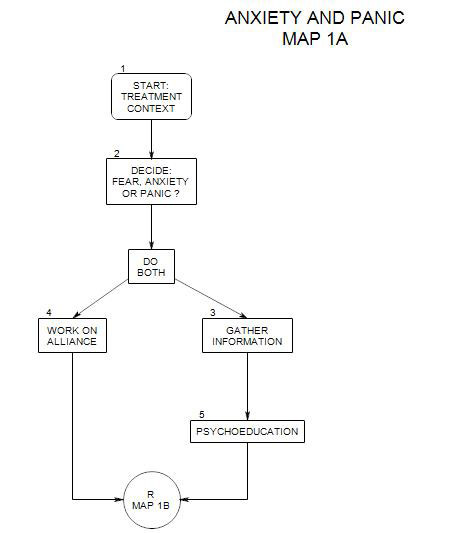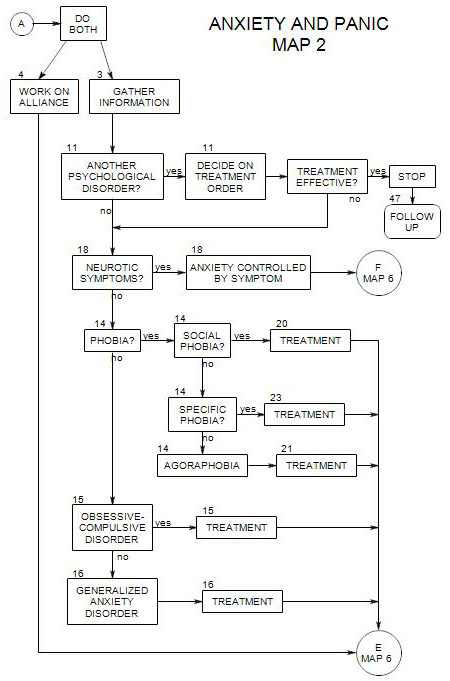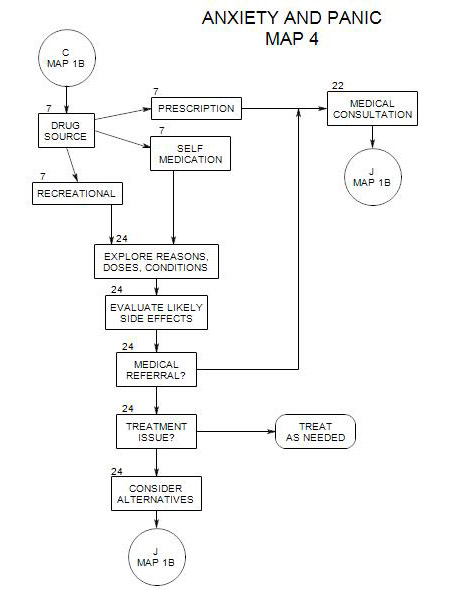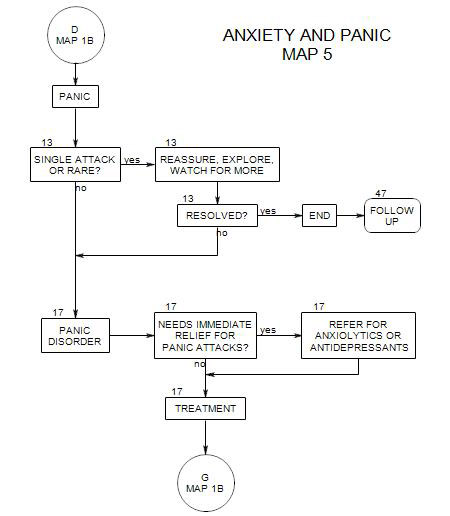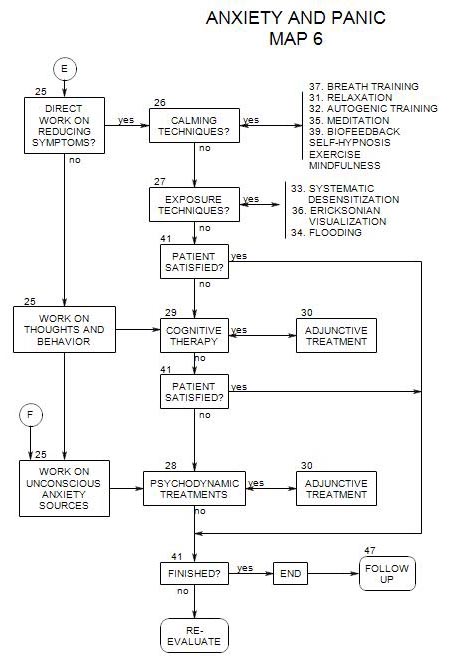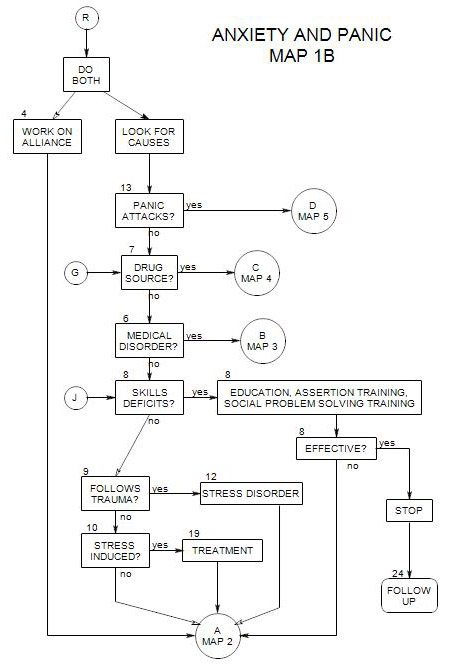
SECTIONS: 4 | 6 | 7 | 8 | 9 | 10 | 12 | 13 | 19 | 24
41. PATIENT SATISFIED?
- Follows Treatment Sections on Map 6
41a. Treatment has been effective
For many patients, the use of calming techniques, exposure techniques or cognitive therapy singly or in combination with each other or with medication will either remove the person’s anxiety or reduce it sufficiently so that he/she can move on without further treatment.
41b. Patient is still anxious
For some people, the next step in treatment will be to consider a psychodynamic approach [ Section 28 ], that looks at longstanding, unconscious, personality sources or his/her anxiety. For others, it will be time to terminate.
Reasons to continue
- The anxiety may not be completely resolved. That means either that without additional treatment, the person would have to continue living with an unacceptable amount of anxiety, or that the anxiety is likely to increase over time.
- There is also the possibility that the person will develop another symptom, possibly in reaction to anxiety or in an attempt to manage it.
Reasons not to continue
- It involves a change of technique that might be difficult for the patient to accommodate to, or not within the therapist’s repertoire.
- There is a risk that painful experiences or emotions will come to the surface, leading to regression.
- Psychotherapy can take a long time.
- Continued treatment can be expensive.
References:
Wolfe (2005) uses a similar, two stage approach in which symptom reduction is in some cases followed by exploratory treatment.
